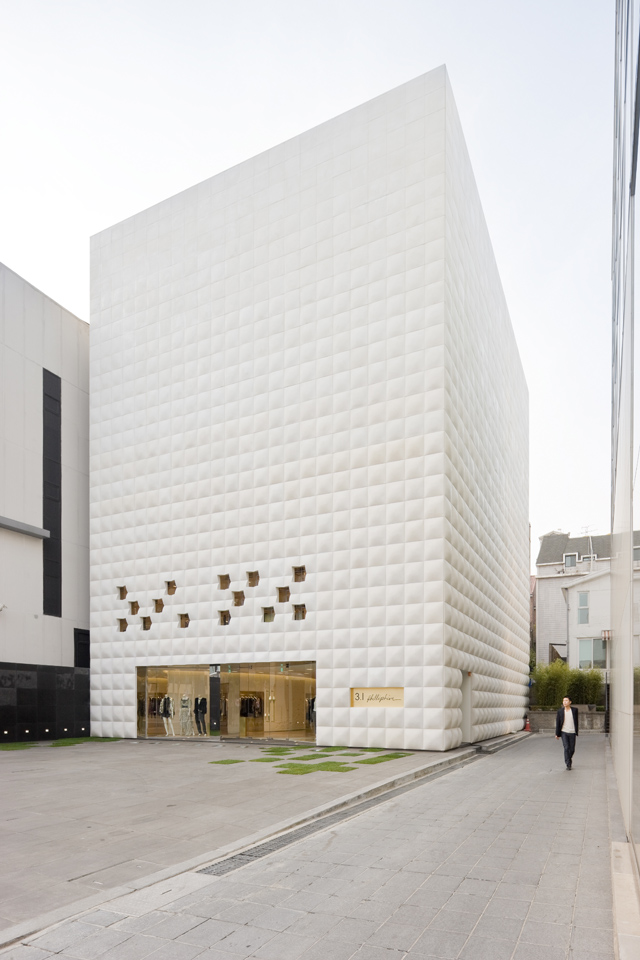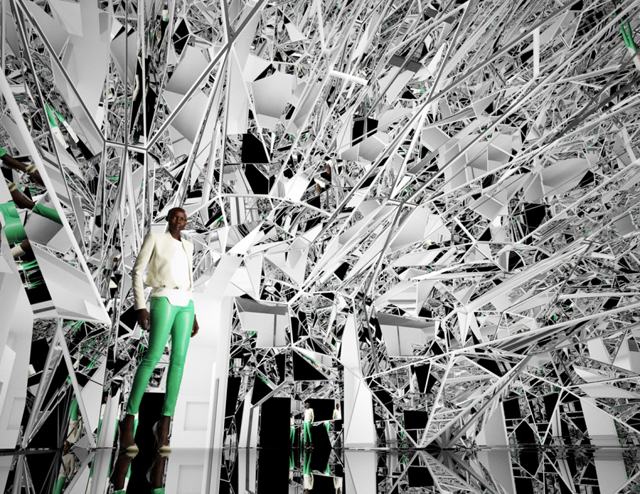COMPUTATIONAL LITERACY
text by Davide Del Giudice
The phenomena of open source architecture are born with the advent of Web 2.0 and the rise of blogs. Many architects who collaborated with international offices and students who attended master degrees in architectural design began to publish their research and in particular scripting. The spread of this part of research that has always been secret and hidden from the public is now clearly a source of research for all that is evolving every day. There are many architects who develop code, among them there is Jose Sanchez, who is an Architect / Programmer based in London. He is a Course Tutor and programming teacher of the Design Research Lab (DRL) at the Architectural Association. In 2009 he joined Biothing building up on the research of generative design. He is the founder of plethora-project and a co-founder of Probotics, an architecture/robotics practice based in London. Then I thought to ask a question to Alessio Erioli, co-founder of Co-de-iT, engineer and researcher at Università di Bologna (with a PhD and MArch in Biodigital Architecture) who attended a workshop held by Jose Sanchez and teaching in Italy, to understand how these issues are being introduced in our university system.
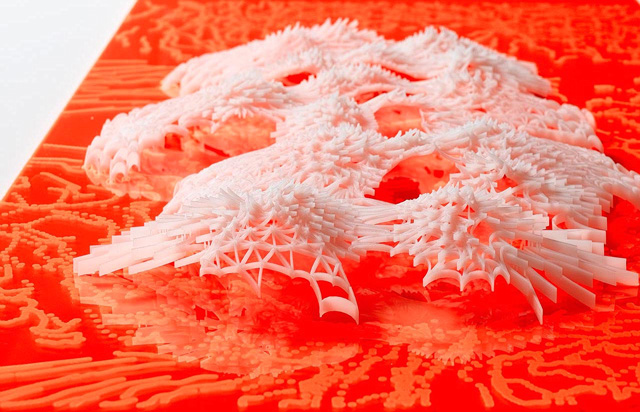
1. (DDG) Tell us about your background before DRL and your experience as programmer, who is your Processing teacher at DRL?
(JS) When I arrived at the Design Research Lab (DRL) at the AA, Processing wasn’t so widespread within the program, very few teams were developing projects using Processing so there was very little legacy to build upon.The influence of Alisa Andrasek generated a richer environment for generative design. On the other hand, there was a strong culture of Maya and RhinoScript, led by Shajay Bhooshan from Zaha Hadid Architects and Robert Stuart-Smith from Kokkugia. The interesting thing was that we had to generate a community between different teams to develop our skills in Processing. Online tutorials were the main resource, especially ‘Nature of Code’ by Dan Shiffman, who I also had the chance to meet that year, but it became evident to me that we needed more resources to help accelerate the transition from no coding experience, to develop some degree of computational thinking.
This was the main motivation to develop the video tutorials, as I was trying to really understand in the most simple way, each of the design challenges that different algorithms presented. It was necessary to develop a systematic documentation of all teaching resources concerning code.
Many students had the ability to build upon some algorithms that they found online and develop a project, but I felt that the end result was always somehow obscure due to the lack of clarity of some of the processes hidden under the hood. Clarity and transparency became essential to develop an agenda based on design through code, and not only an aesthetic mutation of the resources available.
The later influence of Karsten Schmidt of Toxiclibs enabled me to put more of the pieces of the puzzle together, and to start thinking about libraries and a format to interact with a wider open source community.
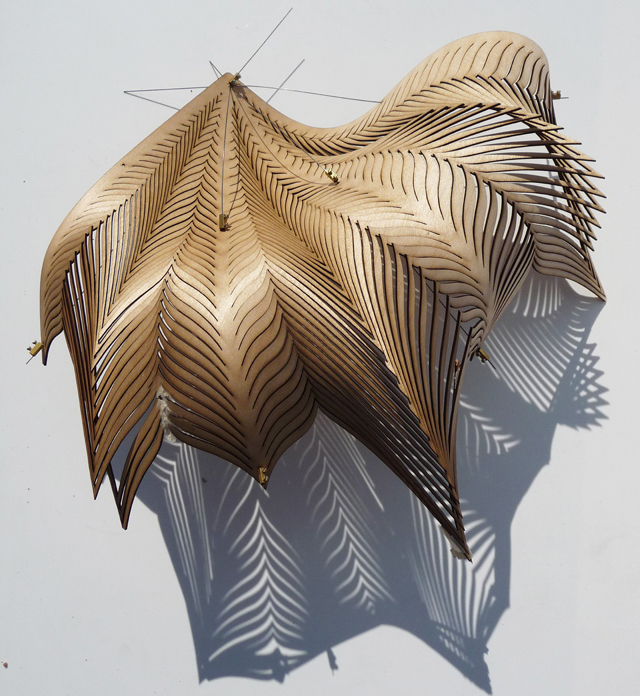
2. (DDG) Your last vision is Plethora-Project (www.plethora-project.com) and with “show me your screens” slogan, which is a strong and democratic idea, you talk about attempting to get rid of obscurantism in digital design. Can you explain your intent in computational literacy?
(JS) I was very excited when I read the manifesto of toplab, a live coding group who promoted the idea of ‘show me your screens’ going against the obscurantism in digital design. I felt that this addressed precisely the problem we are facing today; we start talking in a very encrypted language and hiding the tools that we use, scared that people will be able to replicate the work that we are doing. The problem with this model is that the agenda becomes stuck and everybody is trying to re-invent the wheel over and over again. There is a system of distribution of knowledge that profits from a perpetual research at a very slow place. Some of the challenges of the computational design agenda cannot be expected to be solved by one individual, they involve years of research. It’s no surprise that Stanford University decided to offer an online open class in artificial intelligence (www. ai-class.com), getting thousands of students all over the world, allowing the field to crowd source its evolution. I feel we need to develop an attitude towards collaboration and collective ownership that can accelerate the developments of computational design. In this context, Plethora Project (www.plethora-project. com) seeks that abundance. I believe that only through clear understanding of the tools we can talk and share ideas with the same level of understanding. We need to stop talking about the tools, but to do so I think that tools need to become ubiquitous, in a way that they don’t surprise us anymore; we need the tools to become our second nature.

3. (DDG) At the Protoecologics symposium you had the opportunity to engage in a conversation about the nature of the design tools used in particular coding. Most of the conversation had to do with open-source but the interesting part of the discussion was about code as language. The symposium will bind together ideas of speculative realism in philosophy, expanding developments in science, and shifting modes of production as it pertains to design, all working towards a redefinition of materiality and adaptation in complex environments.
What is the most noticeable way in which code is evolving? What are your future expectations regarding the use of the code?
(JS) This question goes back to the idea of the transfer of knowledge. What is the main medium in which we transfer knowledge? Is it books, or in an oral form in a lecture? Perhaps it is the experience of doing and practicing with some additional guidance. I believe that code starts to inhabit this domain; code is an open system to develop routines, but the way you describe such a routine could have many different orientations. Some of the code we work with is part of a programming paradigm called objects oriented programming. In this paradigm everything is described as objects and the routines are the interactions of such object. I’ll give you an example; consider that you want to calculate the intersection of 2 volumes. You could consider the objects of the operation to be 2 boxes that interact and produce the intersection. You could also consider points to be the objects that describe a volume and those points determine the intersection. You could even consider the intersection itself to be the object. The way in which you as a designer describe objects, and the way in which these objects interact could literally become a design ecology, where every object has a self-demarcation of a boundary and the interactions form a complex mesh of interdependence.
Going back to the question, I feel that this underlines this premise: designers become one more object, an input in a complex mesh of relations allowing for the potential of collective design and collaboration. These objects (in the form of code libraries) become a toolbox that could be re-used in many different ways, building different assemblages.
I would expect for many more designers to start having their own libraries. I don’t believe in one unified model of computation. It will be very interesting to see how different design ecologies start to co-evolve.
4. (DDG) DataReef is the first thesis developed entirely in Processing at DRL. The thesis aims to develop a self-organising system that can adapt to a high preasure environment. The workflow was parallel between digital (Processing/Rhino) and material experiments. In these ways, the work makes coding pretty tactile and physical. Can you comment on this relationship?
(JS) I wouldn’t say that our project was the first one using Processing, but it was clear that after that year everyone started using it, and understanding the potential and openness of the tool. What you describe as tactile coding I find very interesting because it is exactly the premise of what Alisa Andrasek, our tutor for the project, describes as a convergence between matter and information. Whilst in many moments we were unsuccessful, we tried to develop a dialogue between code simulations and material behaviour. We used the parameters and constraints of the material to build degrees of freedom of digital agents. I say degrees of freedom as opposed to constraints because once the system was developed, there was plenty of room to play and research (design if you will) for different expressions within such an ecology. I see a difference between the idea of accomplishing a goal and ‘how’ to accomplish it.
I don’t think that our project could have had this tactile notion if it wasn’t for collective design comprising different expertise. In this regard I refer to my team mates Knut Brunier, Anica Taneja and Diego Rossel.
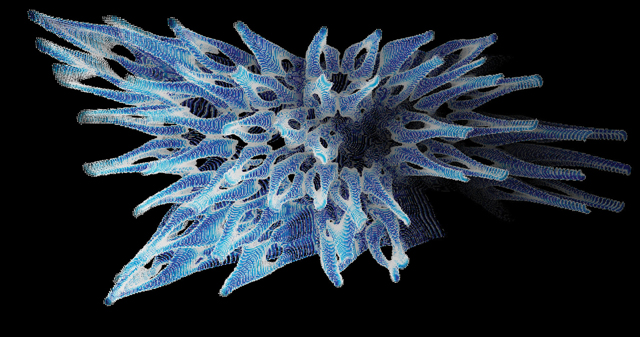
5. (DDG) Biothing’s research works behind geometry, it works to meet data or super data, not x,y,z coordinates such as euclidian geometries but the relations between each other points, relation features, qualities of features and math that describes complex features, like agents. Tell us about agent systems and the implications into novel sensibility, what can you tell about the theme of an agent system as a self-organised strategy?
(JS) Agents are a way of naming an entity or object with some degree of artificial autonomy or intelligence. In many cases in architecture we start by understanding some of Craig Reynolds algorithms of flocking and how each individual takes decisions based on his relation to the collective. This idea is opposed by the notion of a particle which follows blindly the forces of the environment.
If the central theme of agents is a degree of autonomy we must accept that they will also get some degree of autonomy from us, the designers. The notion of control between the designer and the object to be designed is altered and becomes indirect. As I mentioned before, we become participants of an ecology as opposed to being the directors. This doesn’t mean that there is no control, only that our inputs can be mediated by the complex interdependence of behaviours. In this extent, I believe that what we could call Object Oriented Design establishes some distance from what we call Parametric; Parametric being understood as the cause/effect (linear) association of data and OOD being a design ecology, or in the words of Timothy Morton, a ‘Mesh’ of interdependence.
I feel we are just scratching the surface of this domain and what we could call ‘novel sensibility’ is still to emerge from a much richer milieu, that is why Plethora-Project has been conceived to accelerate and document in an open way, resources for computational thinking.
6. (DDG) Alessio, you attended the Agentware workshop in Rovinj, Croatia directed by Alisa Andrasek of Biothing and Jose Sanchez of Genware. This workshop focuses on generative algorithmic ecologies. Recent tendencies in architecture take a unique point of view, with aesthetically novel and unnatural sensibilities emerging from a close scrutiny and study of apparently natural systems. These speculative tendencies are being driven by mathematical and computational abstractions that transform the way we understand the matter-information relationship. In your mission as teacher at University of Bologna you work with several digital tools and physical models with extreme elegance and apparent simplicity. How do you work with keeping students up to date with technology and still point them toward the essentials of their craft? How is data-driven system work finding its way into contemporary architecture?
(AE) I have a manifold approach in which theory, technology and technique create a turbulent interaction. We are symbiotic to our technology, we co-evolve with it; the tools we make and use rewire our brains to comprehend reality and operate within it in the same terms as our toolmaking process interacted with it. The development of a sensibility towards computation and digital tools is achieved through constant application driven by an understanding of creativity as constraint-based. Think about music for instance: improvisation is a perpetual vibration between organization rules (harmony) starting from initial constraints and the attempts to hack them (but so is life I guess!). Intensifying theory<>application connections, starting from very simple scenarios, mastering tools to make them our own extension are all of equal importance. Also, many of the things I teach undermine established paradigms in current practice and theory of architecture, therefore motivation and purpose (by leaving in the briefs enough space for personal expression and actively involving students in contributing and interacting through social networks) are also essential. There’s a great interview with Golan Levin and Zach Lieberman about technology and creative work in art, lots of concepts regarding the core question are beautifully answered there www.theandproject.com/themes/art-coding-coding-art
Related Posts :
Category: Article
Views: 3453 Likes: 0
Tags: agentware , biothing , croatia , datareef , genware , Karsten Schmidt , Processing , Web 2.0
Comments:
Info:
Info:
Title: COMPUTATIONAL LITERACY
Time: 14 marzo 2012
Category: Article
Views: 3453 Likes: 0
Tags: agentware , biothing , croatia , datareef , genware , Karsten Schmidt , Processing , Web 2.0

